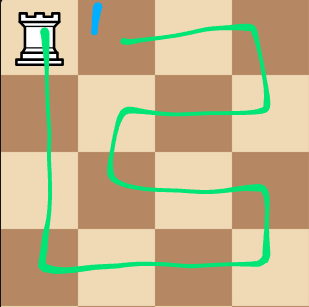Any route from white to white visiting N white squares must visit exactly N-1 black squares. Any route from white to black visiting N white squares must visit exactly N black squares. Therefore on a board with an equal amount of white and black squares, it's not possible to walk a route from a white square to a white square and visit all squares.
You can prove it through induction. Starting with a route that visits just one white square, you visit zero black squares. Then, if you want to extend your route with one white square, you must also visit exactly one black square to get to it, as no two white squares border one another. Meaning for a route of S steps (where each 'step' is actually two moves from a white square to the next white square), you visit S+1 white squares and S black squares, or equivalently N white squares and N-1 black squares.













